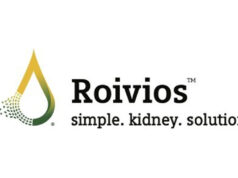 A new multicentre cohort study in Australia has been conducted to investigate the effectiveness of an electronic alert system for the development of acute kidney injury (AKI) in high-serum creatinine patients. Sradha Kotwal (University of New South Wales, Randwick, Australia) led the investigation, published in Nephrology Dialysis Transplantation.
A new multicentre cohort study in Australia has been conducted to investigate the effectiveness of an electronic alert system for the development of acute kidney injury (AKI) in high-serum creatinine patients. Sradha Kotwal (University of New South Wales, Randwick, Australia) led the investigation, published in Nephrology Dialysis Transplantation.
The study’s abstract notes that outcomes associated with AKI acquired at hospital may be best improved through early recognition, and that electronic alerts for patients have been shown to be an effective way to achieve this. What this has not been shown to consistently improve, however, is patient outcomes. Previous studies that have demonstrated such improvement—as well as cost savings—have “usually involved multiple components”, argue Kotwal et al. Their study sought to examine the effectiveness of a care bundle that included electronic alerts alongside a set of other interventions.
To do so, the authors designed a multicentre cohort study that was conducted across three hospitals, one cohort (H1) receiving the intervention and two others (H2 and H3) with controls, each served by a single laboratory. The intervention bundle consisted of “interruptive automated alerts showing AKI stage and baseline creatinine in the electronic medical record (eMR)” as well as a management STOP-AKI guide and an educational programme for junior medical staff. Several outcomes were specified, including length of stay, all-cause in-hospital mortality and management quality.
Turning to the results, the study authors state that, over six months, “639 patients developed AKI (265 at H1 and 374 at controls), with 94.7% in general wards”, while 537 of those (84%) developed Stage 1 AKI, 58 (9%) developed Stage 2 and 43 (7%) Stage 3. Median length of stay was 9 days (IQR 4–17), and showed no variation between the intervention and control groups. “However,” Kotwal and colleagues point out, “patients with AKI stage 1 had shorter length of stay at H1 (median 8 vs. 10 days [p=0.021])”. AKI was found to be better documented in the intervention group (94.8% vs. 83.4%; p=0.001), as were nephrology consultation rates (25% vs. 19%; p=0.04) and cessation of nephrotoxins (25.3 vs. 18.8%; p=0.045). There was no significant difference in mortality between the intervention and control groups (11.7% vs 13.0%; p=0.71).
From these results, the study authors ascertained that the AKI electronic alert bundle “reduced LOS in most patients with AKI”, while also increasing documentation of the condition in patients and contributing to the cessation of nephrotoxic medications—while also facilitating the rise in nephrology consultation. The authors also noted that the majority of AKI in hospitalised patients occurred outside the intensive care unit and the majority had started developing AKI while in the community.
Speaking exclusively to Renal Interventions, corresponding author Zoltan Endre (University of New South Wales, Randwick, Australia) said: “We know that Stage 1 AKI is most common. The improved length of stay in this group suggests that, a focus on early intervention in less severe AKI stages may be more successful than targeting severe Stage 3 AKI, a finding in common with early intervention in non-renal disease.”












